Phat Tich Pagoda’s story is intertwined with the rich Buddhist heritage of Vietnam, making it a key cultural and historical site. SIXT.VN provides curated tours to delve into this heritage and uncover the secrets of Vietnamese Buddhism. These tours enhance your travel experience by offering seamless transportation and expert guides, ensuring a memorable journey into the heart of Vietnamese spirituality, and offering insights into Vietnamese cultural treasures and Southeast Asia explorations.
1. What is the Historical Significance of Phat Tich Pagoda in Vietnamese Buddhism?
Phat Tich Pagoda, or Phật Tích Temple, is significant due to its age, association with prominent monks, and artistic treasures. Founded in the 11th century during the Ly Dynasty, it stands as one of Vietnam’s oldest Buddhist sites. This pagoda played a crucial role in spreading Buddhism and represents the influence of Buddhism on Vietnamese culture and history.
The Ly Dynasty and Buddhism
The Ly Dynasty (1009-1225) marked a golden age for Buddhism in Vietnam. Rulers like Ly Thai To actively supported Buddhist institutions, leading to the construction of numerous temples and pagodas. Phat Tich Pagoda became a center of Buddhist learning and practice.
Association with Prominent Monks
The pagoda is linked to the monk Y Sang, an eminent figure in Vietnamese Buddhism. His teachings and activities at Phat Tich Pagoda helped disseminate Buddhist philosophy and practices across the region. This connection adds to the pagoda’s historical and spiritual importance.
Artistic and Architectural Significance
Phat Tich Pagoda features unique architectural designs and artistic relics. The stone statues and intricate carvings reflect the artistic styles of the Ly Dynasty, showcasing a blend of indigenous and Buddhist art. The pagoda’s architecture provides insights into the cultural and religious values of the time.
2. What Architectural Features of Phat Tich Pagoda Reflect Buddhist Philosophy?
The architecture of Phat Tich Pagoda embodies key principles of Buddhist philosophy through its layout, materials, and decorative elements. The design promotes spiritual harmony and reflects the Buddhist worldview.
Layout and Spatial Arrangement
The pagoda’s layout typically includes a main hall, bell tower, and various shrines, arranged to guide visitors through a spiritual journey. The spatial arrangement encourages meditation and reverence, aligning with Buddhist practices.
Use of Natural Materials
Traditional Vietnamese pagodas often use natural materials such as wood, stone, and tile, symbolizing harmony with nature. This approach reflects the Buddhist emphasis on interconnectedness and environmental respect.
Symbolic Decorations
Decorative elements, such as lotus motifs, dragons, and phoenixes, carry symbolic meanings within Buddhist philosophy. The lotus represents purity and enlightenment, while dragons and phoenixes symbolize power and auspiciousness.
3. How Does Phat Tich Pagoda Showcase the Integration of Local Beliefs with Buddhism?
Phat Tich Pagoda exemplifies how Buddhism in Vietnam integrated with local beliefs and traditions. The pagoda’s practices and iconography reveal a fusion of Buddhist teachings with indigenous cultural elements.
Syncretism in Religious Practices
The pagoda’s rituals and ceremonies often incorporate local customs and beliefs, blending Buddhist practices with Vietnamese folk traditions. This syncretism reflects the adaptability of Buddhism to local contexts.
Depiction of Local Deities
Alongside Buddhist deities, Phat Tich Pagoda may feature local spirits and mythical figures, symbolizing the integration of indigenous beliefs into the Buddhist framework. This incorporation demonstrates respect for local traditions and fosters community engagement.
Cultural Festivals and Events
The pagoda hosts cultural festivals and events that celebrate both Buddhist and local traditions, reinforcing the connection between the religious institution and the community. These events promote cultural preservation and social cohesion.
4. What Role Did Phat Tich Pagoda Play in the Propagation of Buddhism in Vietnam?
Phat Tich Pagoda served as a significant center for Buddhist learning, practice, and propagation, playing a key role in spreading Buddhist teachings and values throughout Vietnam.
Center for Buddhist Education
The pagoda hosted monastic schools and centers for scriptural study, training monks and nuns in Buddhist philosophy and practices. This educational role helped disseminate Buddhist knowledge and ensure its continuity.
Meditation and Retreat Center
Phat Tich Pagoda provided a serene environment for meditation and spiritual retreats, attracting practitioners seeking enlightenment and inner peace. These retreats contributed to the deepening of Buddhist practice among the population.
Translation and Preservation of Texts
Monks at Phat Tich Pagoda were involved in translating and preserving Buddhist texts, ensuring the availability of scriptures in the local language and promoting literacy among the populace. This effort supported the intellectual and spiritual development of the community.
5. What Unique Artifacts and Relics Are Found at Phat Tich Pagoda, and What Do They Signify?
Phat Tich Pagoda houses a variety of unique artifacts and relics that hold religious, historical, and artistic significance, providing insights into the pagoda’s past and its role in Vietnamese Buddhism.
Statues of Buddha and Bodhisattvas
The pagoda features statues of Buddha and bodhisattvas, crafted from stone, bronze, and wood, representing different aspects of Buddhist teachings. These statues serve as objects of veneration and inspiration for devotees.
Relics of Prominent Monks
Relics, such as bone fragments and personal items of respected monks, are enshrined at the pagoda, symbolizing their spiritual achievements and serving as reminders of their contributions to Buddhism.
Historical Inscriptions and Documents
Inscriptions on steles and ancient documents provide valuable information about the pagoda’s history, benefactors, and significant events, offering a glimpse into the past and preserving historical memory.
6. How Did Vietnamese Dynasties Influence the Development of Phat Tich Pagoda?
Various Vietnamese dynasties, including the Ly, Tran, and Le, influenced the development of Phat Tich Pagoda through patronage, architectural modifications, and religious policies, shaping its identity and significance.
Royal Patronage and Support
Dynasties often provided financial support, land grants, and official recognition to Phat Tich Pagoda, enabling its growth and development. Royal patronage enhanced the pagoda’s prestige and influence.
Architectural Renovations and Expansions
Each dynasty contributed to the architectural evolution of the pagoda, adding new structures, renovating existing ones, and incorporating unique design elements. These modifications reflected the aesthetic preferences and religious priorities of each era.
Religious Policies and Doctrines
Dynasties influenced the religious landscape by promoting specific Buddhist schools, supporting the translation of scriptures, and implementing policies that favored or restricted Buddhist practices. These policies impacted the pagoda’s religious orientation and activities.
7. How Has the Local Community Around Phat Tich Pagoda Contributed to Its Preservation?
The local community has played a crucial role in preserving Phat Tich Pagoda through their active participation in its upkeep, cultural activities, and transmission of traditions, ensuring its continuity for future generations.
Maintenance and Restoration Efforts
Local residents contribute to the pagoda’s upkeep by volunteering their time, donating resources, and participating in restoration projects, preserving its physical integrity and historical authenticity.
Participation in Festivals and Rituals
Community members actively participate in festivals, ceremonies, and cultural events held at the pagoda, reinforcing their connection to the site and maintaining its spiritual vibrancy.
Oral Traditions and Storytelling
Local families pass down stories, legends, and historical accounts related to Phat Tich Pagoda, preserving its cultural memory and transmitting its significance to younger generations.
8. What are the Key Differences Between Phat Tich Pagoda and Other Prominent Pagodas in Vietnam?
Phat Tich Pagoda differs from other prominent pagodas in Vietnam in terms of its architectural style, historical context, and specific religious practices, offering unique insights into the diversity of Vietnamese Buddhism.
Architectural Style
While many Vietnamese pagodas share common architectural features, Phat Tich Pagoda may exhibit distinct characteristics, such as unique roof designs, decorative motifs, or spatial arrangements, reflecting local artistic traditions.
Historical Context
Each pagoda has its own unique historical narrative, shaped by its founding circumstances, royal patronage, and association with prominent religious figures. Phat Tich Pagoda’s history is closely tied to the Ly Dynasty and its role in promoting Buddhism.
Religious Practices
Different pagodas may emphasize specific Buddhist schools, meditation techniques, or ritual practices, reflecting the diverse expressions of Buddhism in Vietnam. Phat Tich Pagoda’s religious practices may highlight particular aspects of Buddhist philosophy or local syncretism.
9. What Challenges Does Phat Tich Pagoda Face in Modern Times, and How Are They Being Addressed?
Phat Tich Pagoda faces challenges such as urbanization, tourism pressures, and the need for conservation, which are being addressed through sustainable tourism initiatives, community engagement, and restoration projects.
Urbanization and Development
Rapid urbanization and development can encroach upon the pagoda’s surroundings, threatening its serene environment and historical integrity. Efforts are being made to balance development with the preservation of cultural heritage.
Tourism Pressures
Increased tourism can lead to overcrowding, commercialization, and damage to the pagoda’s structures. Sustainable tourism initiatives aim to minimize negative impacts and promote responsible visitation.
Conservation Needs
The pagoda requires ongoing conservation efforts to address issues such as structural decay, weathering, and the preservation of historical artifacts. Restoration projects are carried out to maintain its authenticity and longevity.
10. How Can Visitors Meaningfully Engage with Phat Tich Pagoda and Its Historical Significance?
Visitors can engage with Phat Tich Pagoda and its historical significance through respectful visitation, guided tours, participation in ceremonies, and mindful appreciation of its cultural heritage.
Respectful Visitation
Visitors are encouraged to dress modestly, maintain silence, and follow guidelines for appropriate behavior when visiting the pagoda, showing respect for its religious significance and cultural values.
Guided Tours and Educational Programs
Guided tours and educational programs offer insights into the pagoda’s history, architecture, and religious practices, enhancing visitors’ understanding and appreciation of its cultural heritage. SIXT.VN offers expertly guided tours that provide in-depth knowledge and immersive experiences.
Participation in Ceremonies
Visitors may have the opportunity to participate in religious ceremonies and rituals, such as chanting, meditation, and offering prayers, fostering a deeper connection to the pagoda’s spiritual traditions.
Mindful Appreciation
Taking time to observe the pagoda’s architectural details, artistic elements, and natural surroundings can foster a sense of mindfulness and appreciation for its cultural and historical significance.
11. What are the Best Times to Visit Phat Tich Pagoda?
The best times to visit Phat Tich Pagoda are during the dry season (November to April) for pleasant weather and during local festivals for vibrant cultural experiences.
Dry Season (November to April)
Visiting during the dry season ensures comfortable weather for exploring the pagoda and its surroundings. The clear skies and mild temperatures enhance the overall experience.
Local Festivals
Visiting during local festivals, such as Lunar New Year (Tet) or Buddha’s Birthday, provides an opportunity to witness traditional ceremonies, cultural performances, and community celebrations.
Weekdays vs. Weekends
Weekdays are generally less crowded than weekends, allowing for a more peaceful and contemplative visit. However, weekends may offer more opportunities to interact with local visitors and experience community activities.
12. What Types of Tours Does SIXT.VN Offer to Phat Tich Pagoda and Other Historical Sites?
SIXT.VN provides various tour options, including private tours, group tours, and customized itineraries, catering to different preferences and interests for exploring Phat Tich Pagoda and other historical sites in Vietnam.
Private Tours
Private tours offer personalized experiences with flexible itineraries and dedicated guides, allowing visitors to explore Phat Tich Pagoda and other sites at their own pace and according to their specific interests.
Group Tours
Group tours provide cost-effective options for exploring multiple destinations with a knowledgeable guide, offering a structured itinerary and opportunities to interact with fellow travelers.
Customized Itineraries
SIXT.VN offers customized itineraries tailored to individual preferences, allowing visitors to combine visits to Phat Tich Pagoda with other cultural, historical, or natural attractions in Vietnam.
13. How Does SIXT.VN Ensure a Seamless Travel Experience to Phat Tich Pagoda?
SIXT.VN ensures a seamless travel experience by providing comprehensive services such as airport transfers, hotel bookings, transportation, and expert guides, allowing visitors to focus on enjoying their journey.
Airport Transfers
SIXT.VN offers convenient airport transfers to and from Phat Tich Pagoda, ensuring a hassle-free arrival and departure. Professional drivers and comfortable vehicles enhance the travel experience.
Hotel Bookings
SIXT.VN assists with hotel bookings, offering a range of accommodation options to suit different budgets and preferences. Strategic partnerships with local hotels ensure quality and convenience.
Transportation
SIXT.VN provides reliable transportation services, including private cars, vans, and buses, ensuring comfortable and efficient travel between destinations. Professional drivers and well-maintained vehicles guarantee safety and convenience.
Expert Guides
SIXT.VN employs knowledgeable and experienced guides who provide valuable insights into the history, culture, and religious significance of Phat Tich Pagoda and other sites. Guides enhance the travel experience with engaging commentary and personalized attention.
14. What Cultural Etiquette Should Visitors Observe When Visiting Phat Tich Pagoda?
Visitors should observe cultural etiquette such as dressing modestly, removing shoes before entering sacred spaces, avoiding loud noises, and refraining from photography during ceremonies to show respect.
Dress Modestly
Wearing modest clothing, such as long pants or skirts and shirts with sleeves, demonstrates respect for the sacredness of the site. Avoid wearing revealing or overly casual attire.
Remove Shoes
Removing shoes before entering the main halls and other sacred spaces is a common practice in Vietnamese pagodas, symbolizing purity and respect. Follow posted signs and guidelines.
Maintain Silence
Speaking quietly and avoiding loud noises helps maintain a serene and contemplative atmosphere. Refrain from using cell phones or engaging in disruptive behavior.
Refrain from Photography
Photography may be restricted in certain areas, particularly during religious ceremonies. Follow posted signs and ask for permission before taking photos, showing respect for the pagoda’s practices.
15. How Does Phat Tich Pagoda Contribute to the Local Economy and Sustainable Tourism?
Phat Tich Pagoda contributes to the local economy by attracting tourists, supporting local businesses, and promoting sustainable tourism practices that benefit the community and preserve its cultural heritage.
Tourism Revenue
The pagoda generates revenue through tourism, supporting local businesses such as restaurants, souvenir shops, and transportation services. This revenue contributes to the economic well-being of the community.
Local Employment
The pagoda provides employment opportunities for local residents, including guides, caretakers, and artisans. This employment helps reduce poverty and improve living standards.
Sustainable Practices
Phat Tich Pagoda promotes sustainable tourism practices, such as waste reduction, energy conservation, and responsible visitation, minimizing negative impacts on the environment and cultural heritage.
16. What Other Attractions Are Near Phat Tich Pagoda That Visitors Can Explore?
Visitors can explore other attractions near Phat Tich Pagoda, such as traditional craft villages, historical sites, and natural landscapes, offering a diverse range of cultural and recreational experiences.
Traditional Craft Villages
Nearby craft villages showcase traditional Vietnamese arts and crafts, such as pottery, silk weaving, and wood carving. Visitors can observe artisans at work and purchase unique souvenirs.
Historical Sites
Other historical sites in the region include ancient temples, citadels, and monuments, providing insights into Vietnam’s rich cultural heritage. These sites complement the visit to Phat Tich Pagoda and offer a broader historical perspective.
Natural Landscapes
The surrounding area features scenic landscapes, such as mountains, lakes, and rice paddies, offering opportunities for hiking, boating, and nature photography. These natural attractions provide a refreshing contrast to the cultural sites.
17. How Has Social Media Influenced the Popularity of Phat Tich Pagoda as a Tourist Destination?
Social media has significantly influenced the popularity of Phat Tich Pagoda by showcasing its beauty, history, and cultural significance to a global audience, attracting more tourists and promoting its preservation.
Visual Exposure
Platforms like Instagram, Facebook, and YouTube provide visual exposure to Phat Tich Pagoda, showcasing its stunning architecture, serene atmosphere, and cultural events. This exposure inspires travel and increases awareness.
Travel Influencers
Travel influencers and bloggers share their experiences at Phat Tich Pagoda, providing valuable insights, tips, and recommendations to potential visitors. Their content influences travel decisions and promotes responsible tourism.
Community Engagement
Social media facilitates community engagement by allowing visitors to share their photos, stories, and reviews of Phat Tich Pagoda. This user-generated content creates a sense of connection and encourages others to visit.
18. What Role Does Phat Tich Pagoda Play in Contemporary Vietnamese Society?
Phat Tich Pagoda continues to play a vital role in contemporary Vietnamese society by serving as a center for religious practice, cultural preservation, and community engagement, promoting spiritual well-being and social harmony.
Religious Practice
The pagoda remains a primary center for Buddhist worship, meditation, and spiritual practice, providing a sanctuary for devotees seeking enlightenment and inner peace.
Cultural Preservation
Phat Tich Pagoda actively preserves Vietnamese cultural traditions through festivals, ceremonies, and educational programs, transmitting cultural values and knowledge to younger generations.
Community Engagement
The pagoda engages with the local community through charitable activities, social outreach programs, and educational initiatives, promoting social welfare and community development.
19. How Can I Book a Tour to Phat Tich Pagoda with SIXT.VN?
Booking a tour to Phat Tich Pagoda with SIXT.VN is easy and convenient through our website or by contacting our customer service team. We offer various tour packages to suit your preferences and ensure a memorable experience.
Visit Our Website
Visit SIXT.VN to browse our tour packages and select the one that best fits your interests and schedule. Our website provides detailed information about each tour, including itineraries, prices, and booking options.
Contact Customer Service
Contact our customer service team via phone, email, or chat for personalized assistance with booking your tour. Our friendly and knowledgeable staff can answer your questions, provide recommendations, and help you customize your itinerary.
Secure Your Booking
Secure your booking by providing the necessary information and completing the payment process. We offer secure payment options and provide instant confirmation of your reservation.
20. What Safety Measures Are in Place for Tourists Visiting Phat Tich Pagoda?
Safety measures are in place for tourists visiting Phat Tich Pagoda, including security personnel, first aid facilities, and emergency response protocols, ensuring a safe and secure environment for all visitors.
Security Personnel
Security personnel are stationed at the pagoda to monitor the premises, prevent crime, and ensure the safety of visitors. They are trained to respond to emergencies and provide assistance as needed.
First Aid Facilities
First aid facilities are available at the pagoda to provide immediate medical assistance in case of accidents or injuries. Trained personnel are on hand to administer first aid and coordinate further medical care if necessary.
Emergency Response Protocols
Emergency response protocols are in place to address potential hazards such as fire, earthquakes, and medical emergencies. These protocols include evacuation plans, communication systems, and coordination with local emergency services.
Discover the profound connection between Phat Tich Pagoda and the broader history of Buddhism in Vietnam with SIXT.VN. Our expertly crafted tours offer unparalleled access to this sacred site, blending cultural immersion with seamless travel logistics. Don’t just visit—experience Vietnam’s spiritual heart with SIXT.VN. Book your journey today and unlock the mysteries of Phat Tich Pagoda and Vietnamese Buddhism.
For inquiries and bookings, contact us:
Address: 260 Cau Giay, Hanoi, Vietnam
Hotline/WhatsApp: +84 986 244 358
Website: SIXT.VN
Embark on a transformative journey with SIXT.VN, where every detail is meticulously planned to ensure your adventure is both enlightening and effortless. Let us guide you through the rich tapestry of Vietnamese history and culture.
Frequently Asked Questions (FAQ)
1. What is the best way to get to Phat Tich Pagoda from Hanoi?
The best way to get to Phat Tich Pagoda from Hanoi is by car or bus, which takes approximately 1.5 to 2 hours. SIXT.VN offers convenient transportation options, including private car rentals with professional drivers, ensuring a comfortable and hassle-free journey.
2. Are there any entrance fees to visit Phat Tich Pagoda?
No, there are generally no entrance fees to visit Phat Tich Pagoda. However, donations are welcomed and contribute to the upkeep and preservation of the site.
3. Can I hire a local guide at Phat Tich Pagoda?
Yes, you can hire a local guide at Phat Tich Pagoda. Alternatively, SIXT.VN provides expert guides who offer in-depth knowledge and personalized experiences, ensuring you gain a comprehensive understanding of the pagoda’s history and significance.
4. What should I wear when visiting Phat Tich Pagoda?
When visiting Phat Tich Pagoda, it is important to dress modestly to show respect for the sacredness of the site. Opt for clothing that covers your shoulders and knees, such as long pants or skirts and shirts with sleeves.
5. Are there any restaurants near Phat Tich Pagoda?
Yes, there are several restaurants near Phat Tich Pagoda that offer a variety of local Vietnamese cuisine. SIXT.VN can recommend and arrange transportation to these dining establishments, providing a convenient and enjoyable culinary experience.
6. What are the opening hours of Phat Tich Pagoda?
Phat Tich Pagoda is typically open from early morning to late afternoon, generally from 7:00 AM to 6:00 PM. It is advisable to check the current opening hours before your visit, as they may vary depending on the season and any ongoing events or renovations.
7. Is it possible to participate in meditation sessions at Phat Tich Pagoda?
Yes, it is often possible to participate in meditation sessions at Phat Tich Pagoda. Check with the pagoda’s management for scheduled sessions or inquire about opportunities for individual practice.
8. Are there any accommodations available near Phat Tich Pagoda?
While there are limited accommodations directly near Phat Tich Pagoda, SIXT.VN offers hotel booking services with a range of options in nearby towns and cities, ensuring a comfortable and convenient stay.
9. How can I contribute to the preservation of Phat Tich Pagoda?
You can contribute to the preservation of Phat Tich Pagoda by making donations, participating in restoration efforts, and promoting responsible tourism practices. Supporting local initiatives and respecting the site’s cultural and religious significance also help ensure its longevity.
10. What other historical sites can I visit in the Bac Ninh province?
In addition to Phat Tich Pagoda, Bac Ninh province offers several other historical sites, including Do Temple, But Thap Pagoda, and Dau Pagoda. SIXT.VN can arrange tours to these sites, providing a comprehensive exploration of the region’s rich cultural heritage.
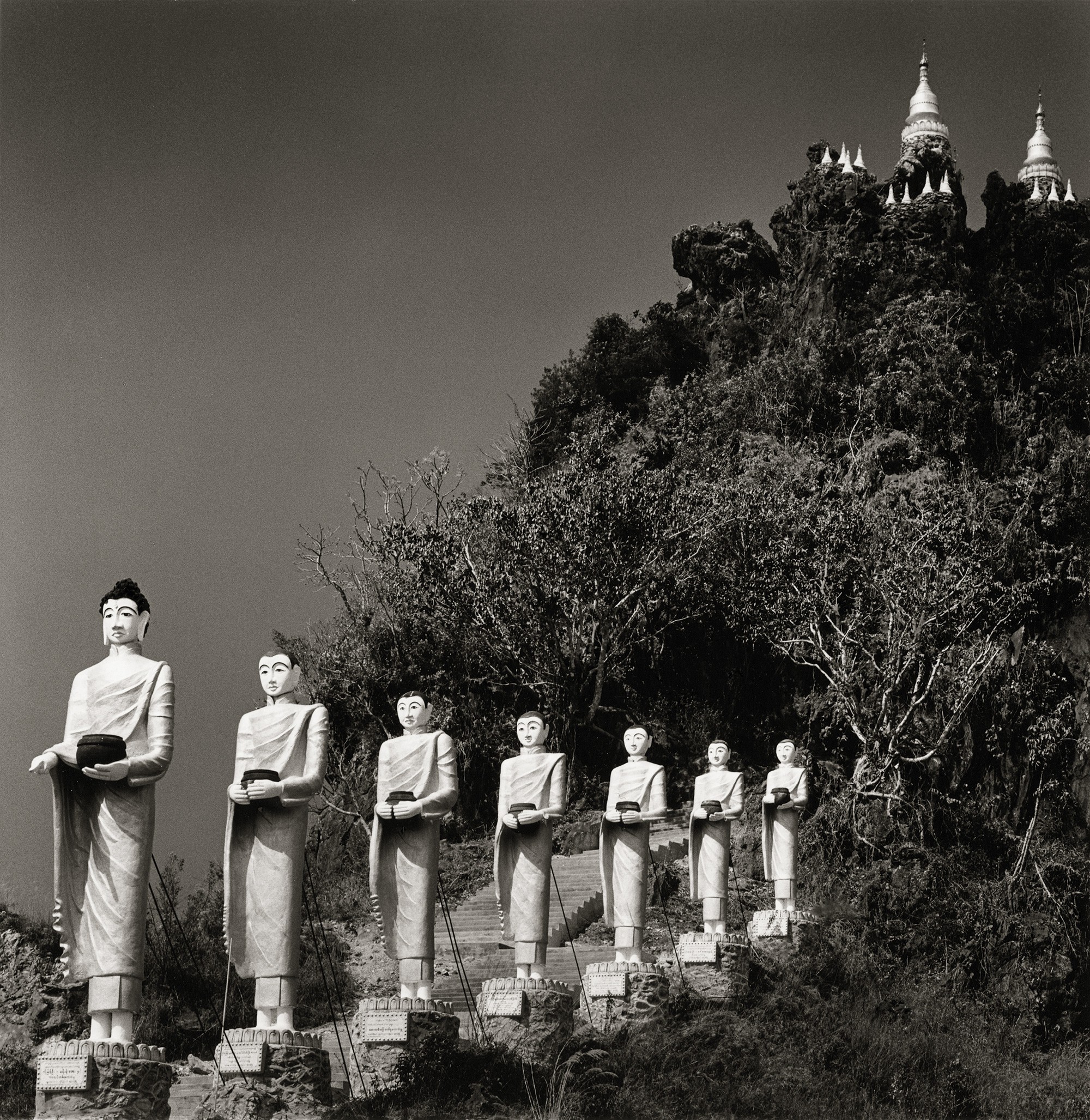 Buddha Procession, Pindaya, Myanmar, 2019
Buddha Procession, Pindaya, Myanmar, 2019
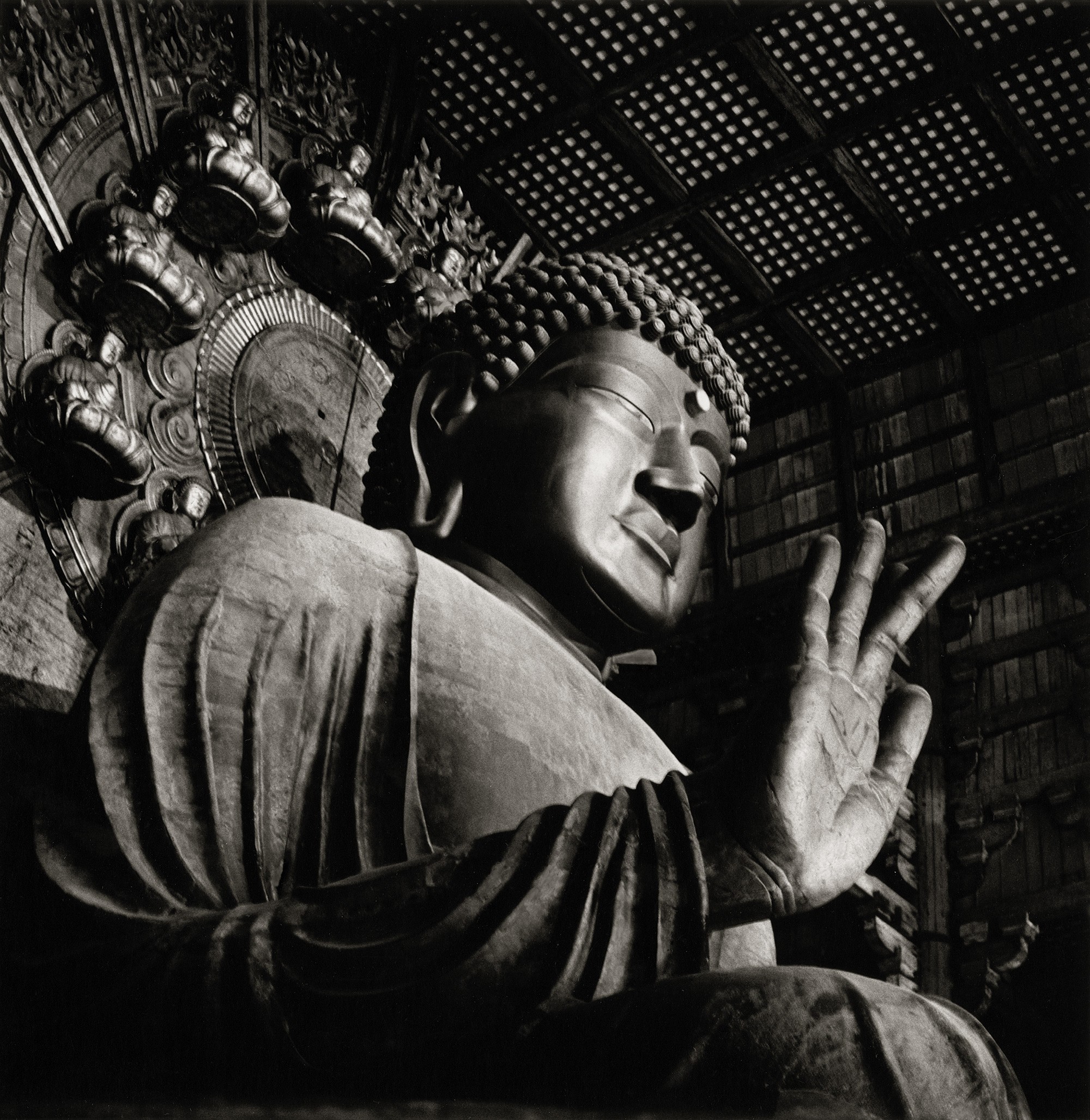 Todai-ji Daibutsu, Nara, Honshu, Japan, 2003
Todai-ji Daibutsu, Nara, Honshu, Japan, 2003
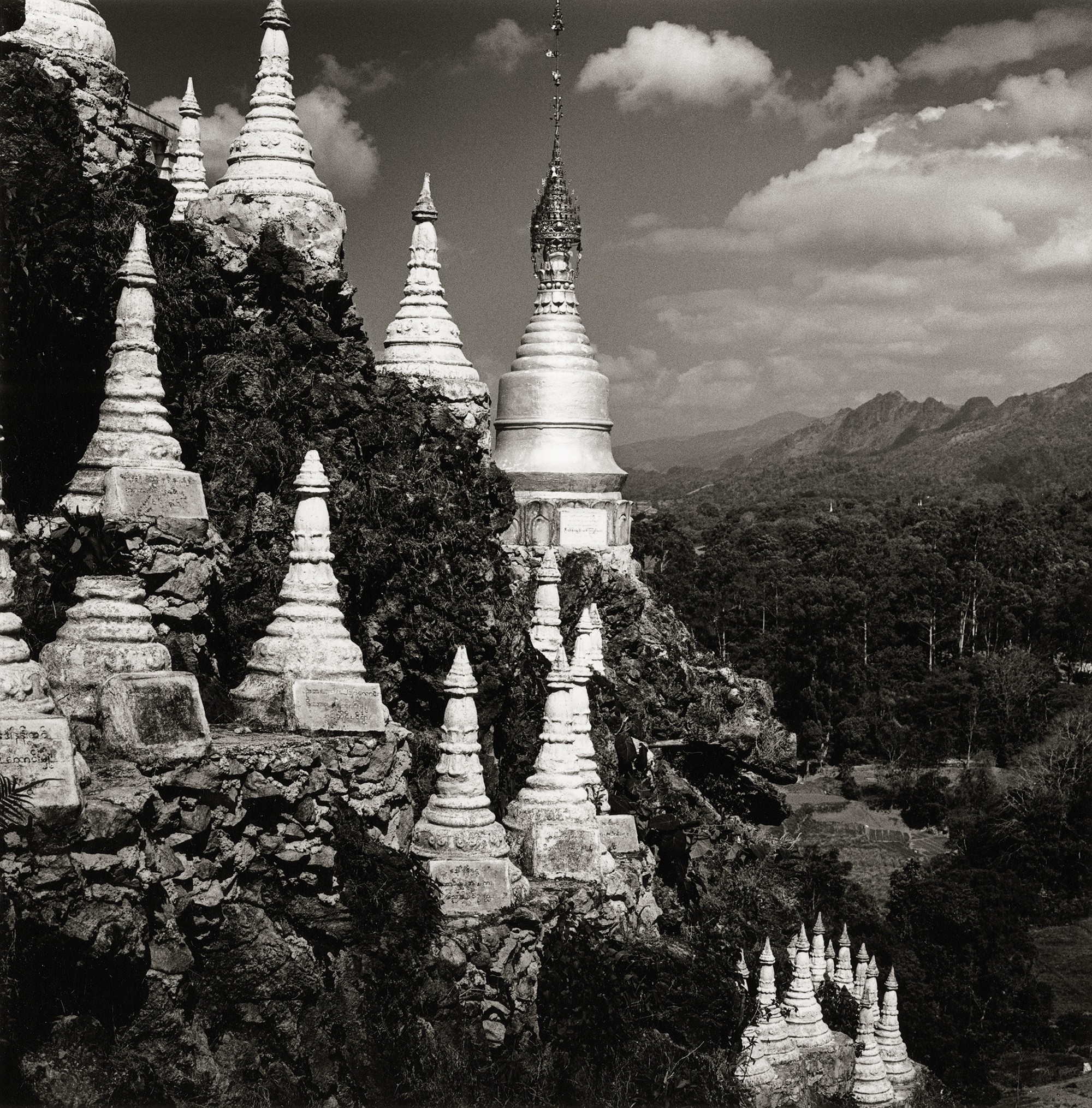 Mountain Pagodas, Main Ma Ye Thakinma Taung Temple, Pindaya, Myanmar 2019
Mountain Pagodas, Main Ma Ye Thakinma Taung Temple, Pindaya, Myanmar 2019
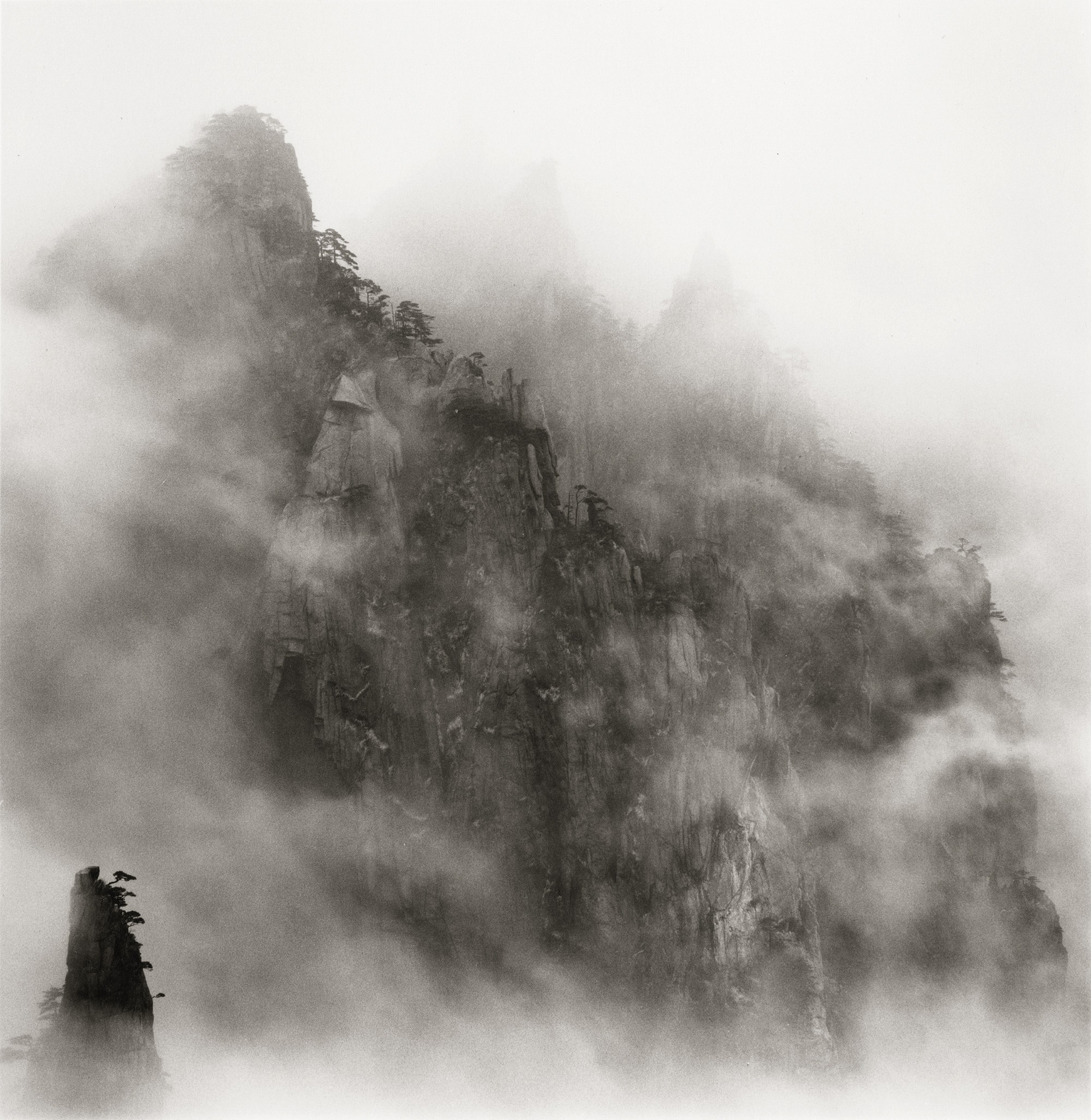 Huangshan Mountains, Study 1, Anhui, China, 2008
Huangshan Mountains, Study 1, Anhui, China, 2008
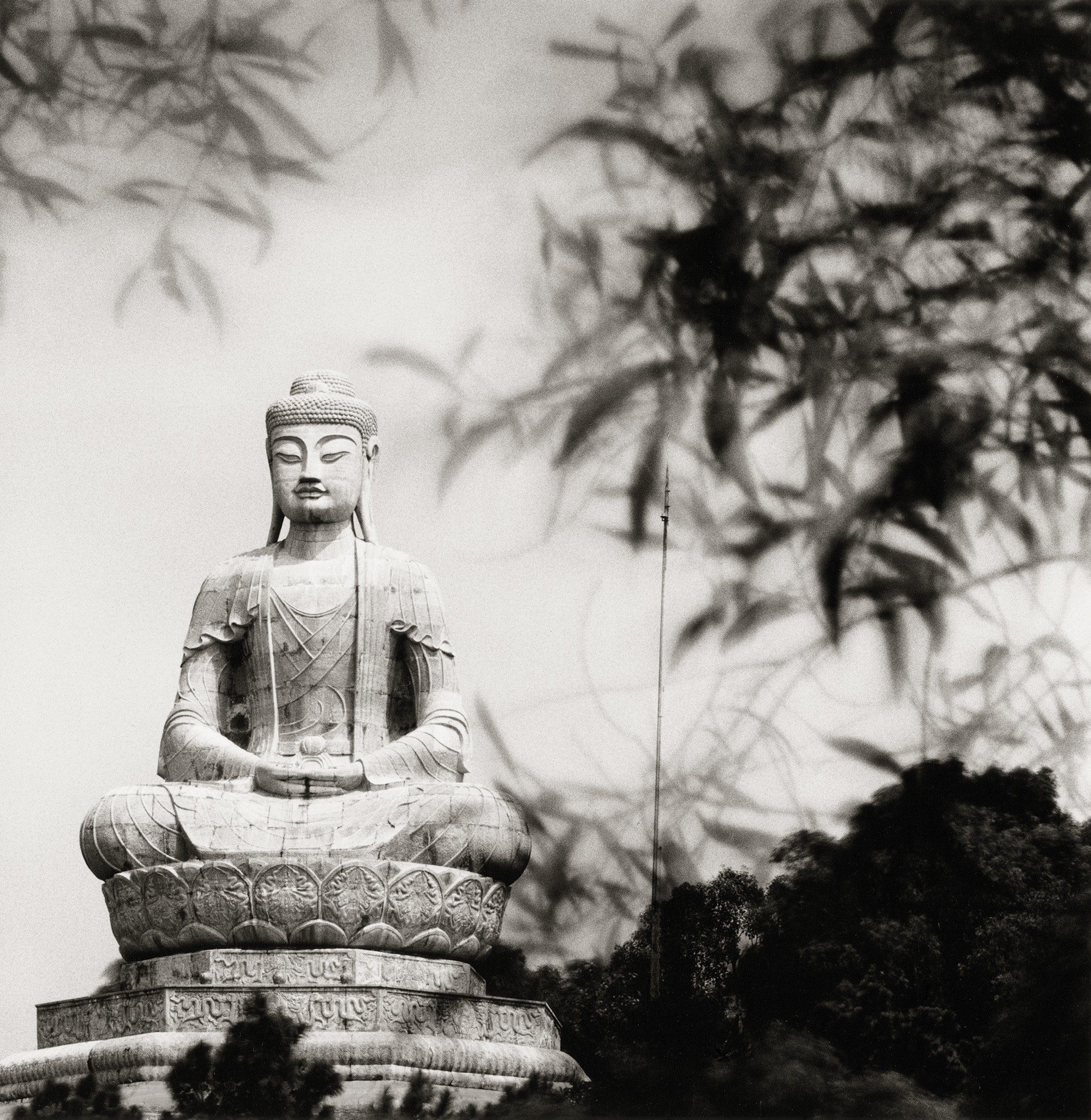 Buddha of Phat Tich, Bac Ninh, Vietnam, 2019
Buddha of Phat Tich, Bac Ninh, Vietnam, 2019



